Preserving Indigenous Cooking Techniques Across Generations
43 min read How Antiguan and Barbudan families pass down coal pot cooking, cassava bread-making, and ducana leaf-wrapping through elders' stories, home kitchens, and community workshops. October 06, 2025 21:08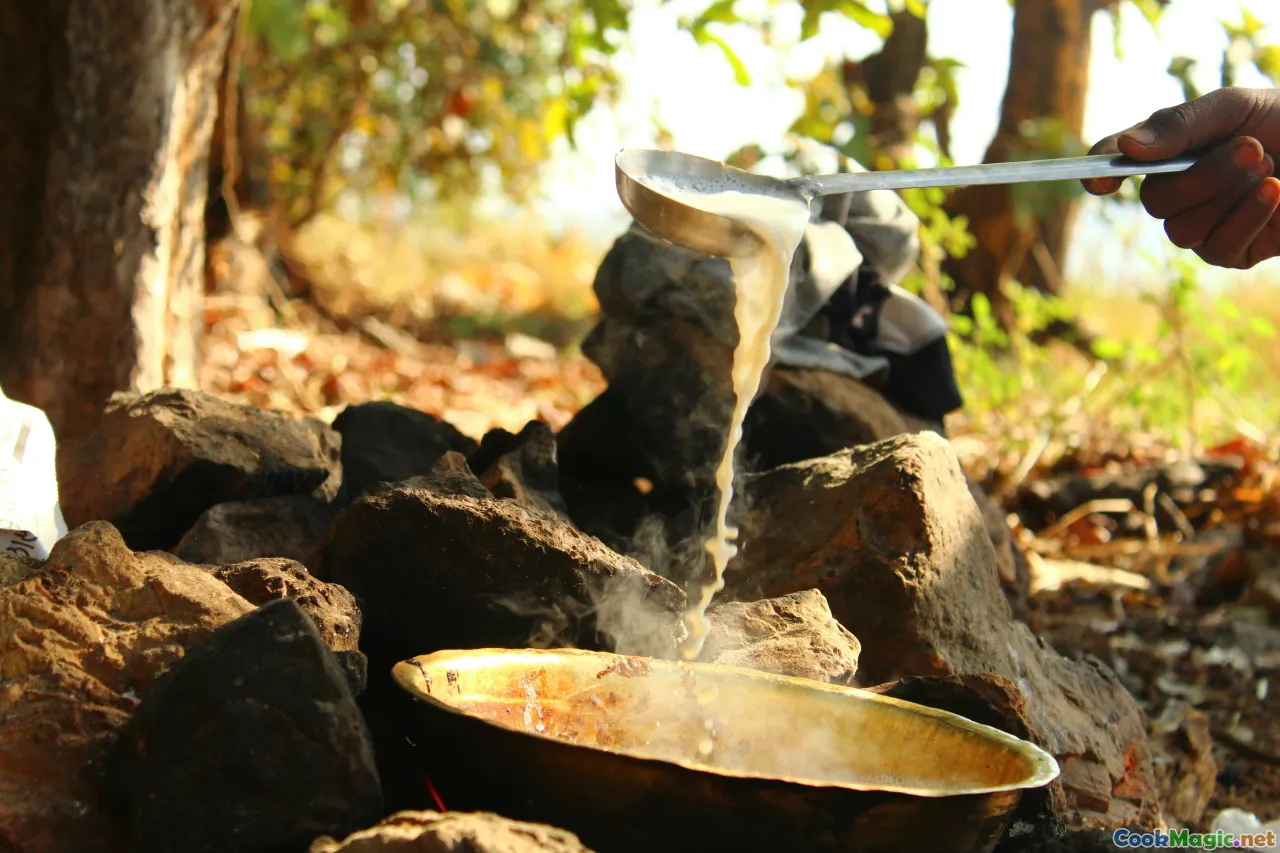
The morning I learned to read a coal pot, the sun rose shyly over Codrington Lagoon and salted the breeze like a finishing sprinkle. A ribbon of smoke curled from a clay bowl set on three stones in a backyard, and a woman named Bernice tapped the rim with her spoon as if coaxing a drum. She did not fuss with a thermometer. She listened. The coals murmured. The pot breathed. Behind her, the palms murmured as well, and somewhere, a rooster climbed the scale and stuck the landing on a high note. On the fire: a low, green perfume rolling off callaloo leaves and okra, softened by pumpkin and the faint sweet bitterness of char from the pot’s lip. We waited, we watched, and we learned by looking, smelling, and feeling.
Preserving indigenous cooking techniques across generations in Antigua and Barbuda is an act of guardianship, but also an act of love. It’s the practiced tilt of the wrist that stops fungee from sticking. It’s the quiet test for the right temperature of griddle with a drop of water that skitters like a lizard—just right. It’s a banana leaf sighing as it hits steam, folding around grated sweet potato and coconut like a green envelope of memory. And it’s the refusal to let speed, stainless steel, and packaged flavoring dull the local grammar of fire, smoke, leaf, and earth.
The Living Fire: Coal Pots, Clay, and Control

Ask an elder in Antigua about a coal pot and watch their face soften as if you’ve said the name of an old friend. The coal pot—shaped of red clay, squat and sturdy—is the island’s portable hearth. If you pass through Sea View Farm, a village with a pottery tradition that braids skill and red dust into art, you’ll see coal pots in various stages: a wet, raw bowl holding the potter’s fingerprints; a dry one matte and chalky; a fired pot darkened by smoke, its surface glazed not by enamel but by use.
A coal pot is simple: a clay basin for charcoal; a ring to support a pot or pan; vents to encourage oxygen. But mastering it is anything but simple. Control comes from the senses. I learned to gauge heat by the color language of coals: the blush of waking ash, the orange yawn of ready heat, the angry white glare that sears fish too quickly. Bernice taught me to feed the fire small shovels of bush charcoal—often from acacia or logwood—so it burned steady, not in fits. She angled the pot to catch a breeze when a stew needed more vigor, and banked the coals in a crescent when we wanted a bare simmer to keep pepperpot whispering all afternoon.
Why clay, when there’s gas and induction? Clay is time travel. It warms slowly, flexes around a pot, and keeps a constant heat that never shocks. It leans toward the rhythm of dishes meant to persuade, not insist. That matters for local food—stews punched with salted meats that need patience to mellow; roots that soften into sweetness; greens that give up their iron bite to silk. And there’s the flavor: a soft char, a mineral breath, a tinge of smoke that plays bass to the bright treble of scotch bonnet and fresh thyme. Any culinary reader who’s coaxed a paella over wood or a mole in a clay cazuela will recognize the difference. Clay makes its own season.
For preservation’s sake, coal pot skills aren’t just heritage tours. They’re classes under tamarind shade, cousins showing cousins, WhatsApp groups pinging photos of ash patterns and “is this hot enough?” questions. They are potter demonstrations in Sea View Farm and in St. John’s during Independence food fairs, where the glaze on a new coal pot is your reflection: a reminder that you’re part of a chain.
Fungee and Pepperpot: A National Conversation in a Bowl

Fungee and pepperpot is Antigua and Barbuda’s national dish, and it feels like a dialogue. The pepperpot speaks, the fungee listens. Pepperpot is deep and green-black, its aroma like the inside of a garden at midnight—callaloo greens (amaranth, sometimes young dasheen leaves, even spinach if that’s what the season yields), okra, pumpkin, eggplant, and a salty backbone from pigtails or salted beef, softened by hours of burbling. Scotch bonnet doesn’t shout; it sings harmony, a citrusy heat that lengthens the stew’s vowels.
Fungee, the accompaniment, is the palate’s compass. Cornmeal cooked with okra and butter, stirred and scraped and stirred again until the spoon meets elastic resistance. Not hard, not loose: pliant. Old cooks use a wet calabash to shape it into rounded dumplings, glossy as river stones. I’ve watched fungee taught without measurements—only the eye for thickness and the ear for the pot’s stickiness. That “slap-slap” as the paddle lifts, clean but not squeaky, is the signal. If it clings, you keep going; if it cracks, add water; if it glistens and releases, you’ve arrived.
When you spoon pepperpot over fungee, or nestle that dumpling alongside so it can sip from the edge, you taste a long history condensed. Amerindian techniques for greens and ground provisions; African expertise in slow stews and the alchemy of salted meats; European introductions like cornmeal repurposed into comfort. Trouble and triumph end up in the same pot. That’s part of preservation too—teaching younger cooks that “authentic” is not a museum sample. It’s a process, an agreement with time and what the market had that day. Bernice’s pepperpot may include wild maringa leaves one week, more pumpkin the next. But the method—layering salted meats, then long-cooking greens with thyme and cloves, adjusting viscosity with okra’s silky mucilage—anchors it.
Chefs looking to respect the tradition and still apply fine-dining polish have room. Serve a quenelle of fungee with a ladle of pepperpot reduction; add a quick pickle of black pineapple to introduce brightness; finish with a swirl of coconut milk if your grandma allows it. The core techniques—salting, rehydration, low simmer, okra integration—should remain intact. The rest is your riff, carried on the bass line of the coal pot.
Banana Leaf Memory: Wrapping Ducana the Old Way

Ducana is one of those dishes that seems simple until you make it with someone who knows. On paper: grated sweet potato, coconut, brown sugar, flour, spices—nutmeg, cinnamon, maybe a lick of ginger—and raisins if the family name says so. The mixture is wrapped in banana leaves and boiled until set. In practice, it’s a choreography of scent and touch. You trim banana leaves and pass them over an open flame for a few seconds until they soften and shine. The smell—green, faintly tannic, like the breath of a wet gully—opens a memory even if you’ve never smelled it before.
I learned ducana in Potters Village in a kitchen with tiled counters that had collected the years in tiny spider-fine cracks. “Never rush the grating,” said my teacher, Miss Althea, producing a box grater that had been hammered and re-cut over the decades. Fresh sweet potato releases a milky juice that slicks your fingers. Coconut adds grit and scent—oily, tropical, a pure white confetti under the fingernails. The ratio is not exact because the sweet potato tells you. Too watery and you’ll have sludge; too dry and it will break like clay. The mixture should slump from the spoon, not pour nor plop. “Look for a ribbon,” she whispered, and indeed the batter fell in ribbon-thick folds.
The banana leaf squares are oiled lightly—coconut oil adds perfume—and filled with a scoop of batter. Folding is an art: sides in, bottom up, top down, and tied with kitchen twine or a strip of leaf. The bundle enters simmering water and the kitchen fills with a sweet, herbal steam that wets your cheeks. As they cook, ducana surrender their raw-edge brightness and darken kindly. When done, they’re slicing-soft but hold together, with a tender chew from coconut and a sweetness that leans warm, not sugary.
The leaf is not just presentation. It’s a living tool. Without it, foil works, but you lose that mild, green whisper. Preserving the technique means growing banana and plantain patches near homes again, or at least knowing your market vendor. It means teaching the flame pass—wafting leaves over low fire until they turn supple—and showing how your ear knows when the simmer is agreeable, not aggressive. It means giving younger hands the knife and letting them mess up a fold or two until their fingers remember what their eyes saw.
Serve ducana beside saltfish and chop‑up, or sliced with a pat of butter, or drizzled with condensed milk if you want to scandalize a traditionalist. But always, when you unwrap a hot ducana and the leaf releases a wet, green sigh, take a moment over the steam. That’s as important to the technique as any ratio.
From Barbacoa to Backyard: Smoke, Fish, and the Amerindian Line
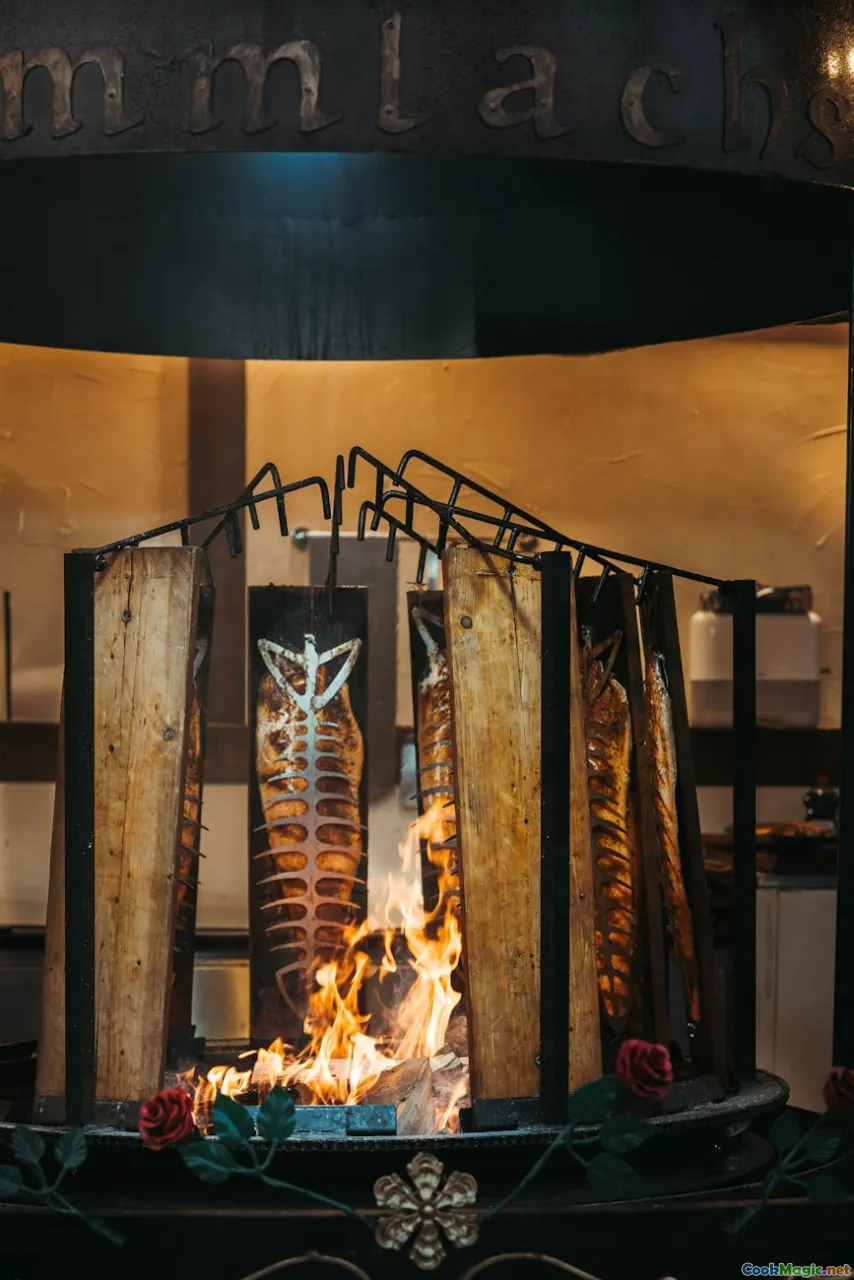
Before barbecue was a verb, it was a noun: barbacoa, the wooden lattice the Taíno and Kalinago built to smoke and cook over slow fire. The line from those grates stretches straight to an Antiguan beach at Urlings, where fishermen still sell wahoo and mahi-mahi in the morning, and families grill by afternoon. I watched a man named “Pappy” knock together a grate from green sticks on stones. The wood—tamarind and sea grape—gave off a sweet smoke, friendlier than oak, and the fish fillets received it like a blessing.
The technique is restraint. The fish is cleaned thoroughly, scaled to a gleam, patted dry. Marinade is a logic of acid and fragrance: lime juice, smashed garlic, thyme, thinly sliced onion, seasoning pepper in pretty, deceptive colors that promise heat and deliver perfume. The fish rests barely long enough to absorb; any longer and the acid will bully the flesh. On the grate: skin side down, closer to the fire at first so it tenses and crisps, then lifted, turned, and raised on a second tier until the smoke does more than the flame. Pappy brushed the fillets with annatto-tinted oil, and they blushed as if flattered.
What set this apart wasn’t the ingredients but the conversation between wood and flesh. An Amerindian sensibility respects smoke as a spice, not a blunt force. The goal isn’t a char to prove you used fire. It’s a tender, opaque flake of fish that tastes like sea wind with a memory of charcoal. The Amerindian word remains: patience. When younger cooks light gas grills at home, teach them to bank coals to one side, to keep a cooler zone for smoke, to soak sugarcane sticks or a bundle of thyme and toss it on as a scent. Teach them that when the fish releases easily from the grate, it’s ready to flip. And when your nose registers that the onion has turned sweet and the thyme is no longer sharp in the smoke, it’s time to eat.
Cassava Wisdom and the Matapi
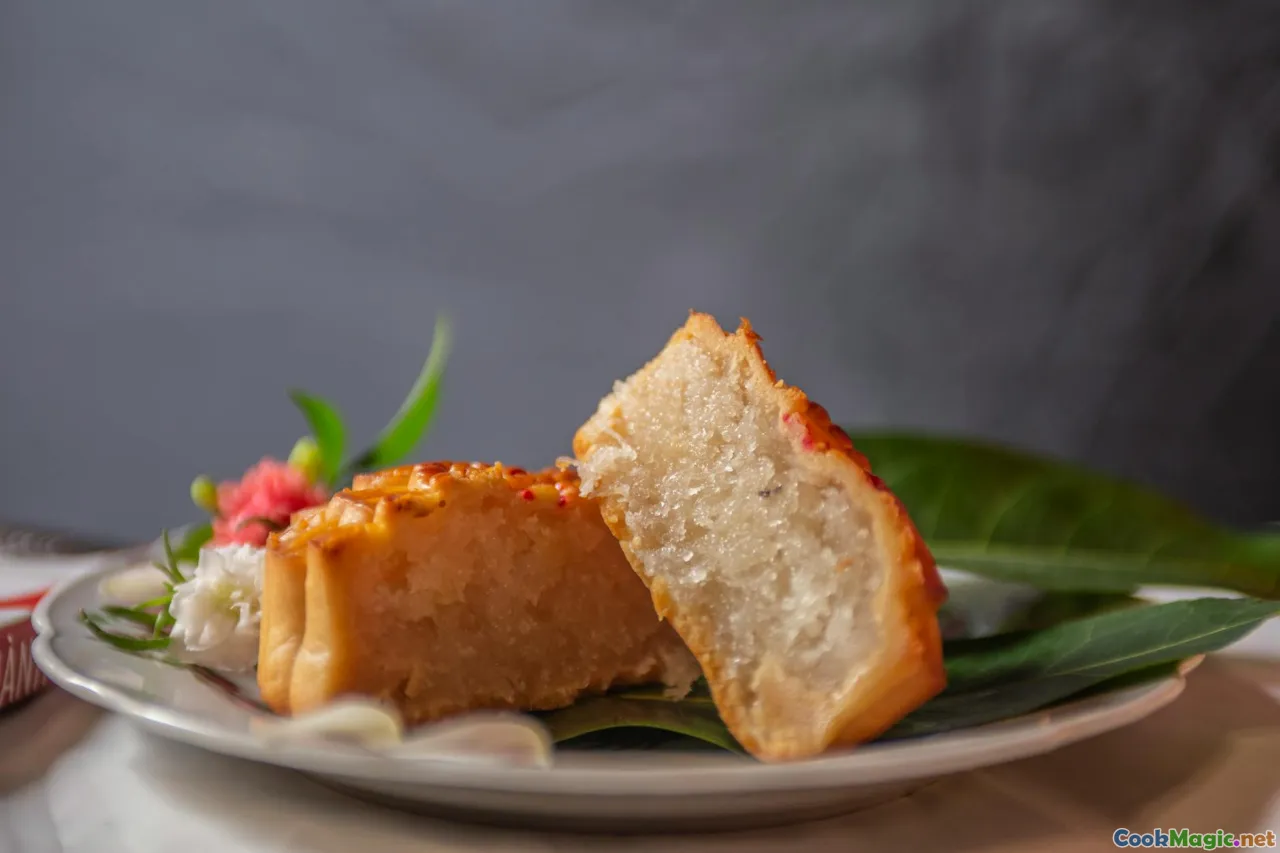
Cassava sits at the core of indigenous Caribbean foodways with a fierce, quiet presence. Bitter cassava is starchy and sustaining, yet contains cyanogenic compounds that must be removed. That knowledge—how to make it safe and delicious—is an inheritance from the region’s first cooks. On Antigua, cassava bread is less ubiquitous than in some neighboring islands, but you’ll still encounter it at heritage fairs, in households that keep old ways, and lately, at demonstrations led by cultural groups who refuse to let the technique slip.
I watched a Kalinago demonstrator—visiting for a heritage day—show the matapi, a woven, flexible press that looks like a long Chinese finger trap. Grated cassava (using a rough board studded with stones or a modern grater) is packed into the matapi, which is then hung and weighted at the end. As it stretches, it squeezes the toxic juice out. The juice is so potent that folklore tells you not to feed it to chickens; in reality, it’s boiled and sometimes seasoned to make a spicy sauce after toxins are removed. The pulp is then sieved, spread on a dry iron griddle or flat clay griddle, and cooked into thin discs that snap at the edges and smell like a cross between popcorn and a summer field.
The technique—press, dry heat, attention—is a masterclass in transforming the inedible. It’s also a reminder of the island’s first pantry. Preserving it means more than recipes. It requires telling the story of why we press, how we learned, and who risked learning. Culinary schools can invite elders to demonstrate a matapi; market vendors can carry cassava bread beside johnny cakes; home cooks can replace a slice of imported sandwich bread with cassava bread and taste the region’s spine.
And if you don’t have a matapi? You can approximate a press with cheesecloth and weights, but you must respect the safety step: grate, press thoroughly, squeeze every drop, and cook the bread thoroughly on a dry surface until it smells toasty and the surface is matte, not damp. The payoff is a wafer that supports a slice of saltfish like a promise, with a delicate crunch that embarrasses crackers.
Saturday Kitchen: Saltfish, Chop‑Up, and the Soft Language of Knife and Pan

Saturday morning in St. John’s Market is a cascade of sounds: machetes nosing through coconut, bargaining laughter, the soft thud of breadfruit shifted from hand to hand. The breakfast that follows in many homes is a choreography of pots and bowls—saltfish to soak, callaloo to slice, eggplant to steam. This is the realm of chop‑up, a dish whose name is both technique and instruction.
Saltfish—usually cod—is desalinated overnight or via quick changes of hot water. Its scent shifts from harsh brine to something like sea air drying on a rope. Flaked and set aside, it awaits. Meanwhile, callaloo greens are rinsed until the sink glitters with droplets, then sliced into ribbons. Okra is topped and tailed, its seeds catching the light like pearl beads. Eggplant (boulangère to some, “garden egg” to others) is peeled—the skin saved for stock, perhaps—and the pale flesh cut into cubes.
The old technique steams the eggplant to mush, briefly steams or boils the okra to tenderness, then drains both well—this is crucial; excess water will dilute flavor and muddle texture. In a separate pan, onion sweats in oil until sweet; garlic kisses it; thyme pricks through. The saltfish is sautéed until it starts to catch slightly, releasing a nutty perfume that only salted, dried fish can make. Then the vegetables join, and the “chop‑up” continues with spoon and spatula, cutting, mixing, folding, tasting. Pepper sauce—mustard-yellow if you’re Antiguan about it—goes in by drops until the dish leans forward with heat but doesn’t bite.
Chop‑up is vivid but gentle. Okra’s silk binds it; eggplant’s softness delivers flavor; callaloo gives it green backbone. Texturally, it’s a cousin to a rough pesto, a spread and a side in one, beautiful against the sweetness of ducana or on a johnny cake split and warm. Preserving its technique is passing on the knife work, the steam over boil preference, the sharpness of heat used as an ingredient rather than a dare. And it’s teaching younger cooks to salt last—saltfish carries its own story of salt, and you must listen first.
The Taste of the Sea on Barbuda: Lobster, Conch, and Care
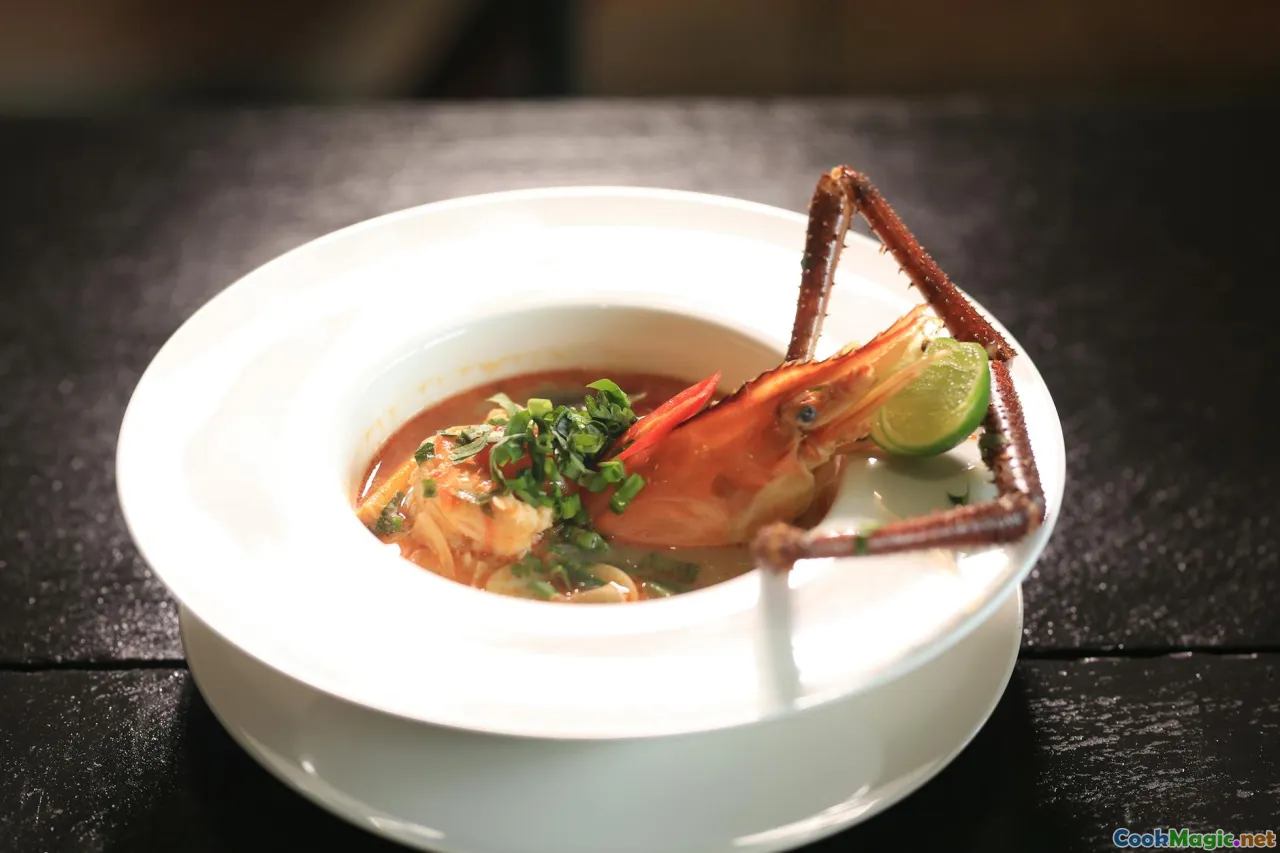
Barbuda’s shoreline is a library written in shells. Spiny lobster—in season—scuttle into traps and onto grills, the meat pearly and firm, the shell turning a carnival red. Conch, harvested under regulated seasons and size limits, appears in salads and broths that taste like surf. The techniques for both are simple in theory but precise in practice.
Lobster on a beach grill is a mood. A fisherman in Codrington splits a live lobster in half with one sure move, the knife’s heel cracking the carapace like a knuckle. The tail is brushed with oil, lime juice, and melted butter infused with garlic and thyme. Grilled shell-side down, the meat steams gently in its own compartment, the shell acting as both griddle and shield. The scent is unmistakable: briny sweetness, coral-warm. The mistake most visitors make is overcooking; true technique pulls the lobster just as the center turns opaque, with a little spring still in the bite. You’ll finish it with a squeeze of lime because the sea loves to taste itself again.
Conch, on the other hand, is patience. Freshly knocked conch is pounded to tenderness—not brutalized, not left to rubberize—with a mallet’s rhythm that’s almost musical: two soft taps, rotate, two taps, rotate. In raw salads, the meat is sliced paper-thin and marinated with lime, scallion, thyme, bell pepper, and seasoning pepper. The acid textures the meat into silk. In conch “water”—a humble broth—you simmer the cleaned conch with okra, a whisper of scotch bonnet, onion, and thyme until the kitchen smells like wind pushing through mangroves. The broth looks clear but tastes deep.
Preservation here includes stewardship. On Barbuda, talk of lobster and conch comes with talk of seasons, sizes, and reefs. Elders worry aloud about pressure on stocks when tourist appetites swell. If you’re cooking these dishes, you inherit the responsibility to ask your vendor about the harvest, to keep the shellpile honest. Teaching the old techniques also means teaching the old rules: take only what’s legal; honor the closed months; respect the sea’s clock.
Hands Remember What Recipes Forget

In Antigua and Barbuda, as in many food cultures, recipes traveled mouth to ear to hand before they ever traveled eye to page. That’s why preservation efforts must respect what measuring spoons can’t: the thickening angle of a spoon, the way a pot’s breath fogs your glasses when it’s almost ready, the smell of okra when its raw edge has tipped into silk. These are techniques that shrink when confined to words but bloom when watched.
I sat at a kitchen table in Liberta with a notebook out and quickly put it away. Miss Gwen didn’t speak in cups and grams. She said “enough” and “not too much” and “smell that? That’s right.” When she taught me to finish pepperpot with a few leaves of Spanish thyme, she bruised them between her palms first and inhaled, an expression that was part prayer, part assessment. I learned more from the angle of her shoulders than from any list of steps.
Preserving indigenous techniques across generations, then, means creating spaces for apprenticeship. Invite nephews into the kitchen. Swap Sunday responsibilities so younger cousins take the spoon. Record videos where the camera listens to the pot, not just the cook. Keep a family WhatsApp full of short clips: how to fold ducana, the color of coals for frying fish cakes, the hand position for turning fungee without burns. Culinary schools in Antigua and Barbuda—the Hospitality Training Institute included—can fold these micro-mentorships into their syllabi, pairing elders with students for modules on local methods.
On paper, write sensory cues. Replace “cook for 10 minutes” with “cook until the okra loses its squeak against the pan” or “stir until the fungee sighs and pulls from the side.” That’s how hands will remember when recipes are far.
Translating Techniques for the Modern Kitchen
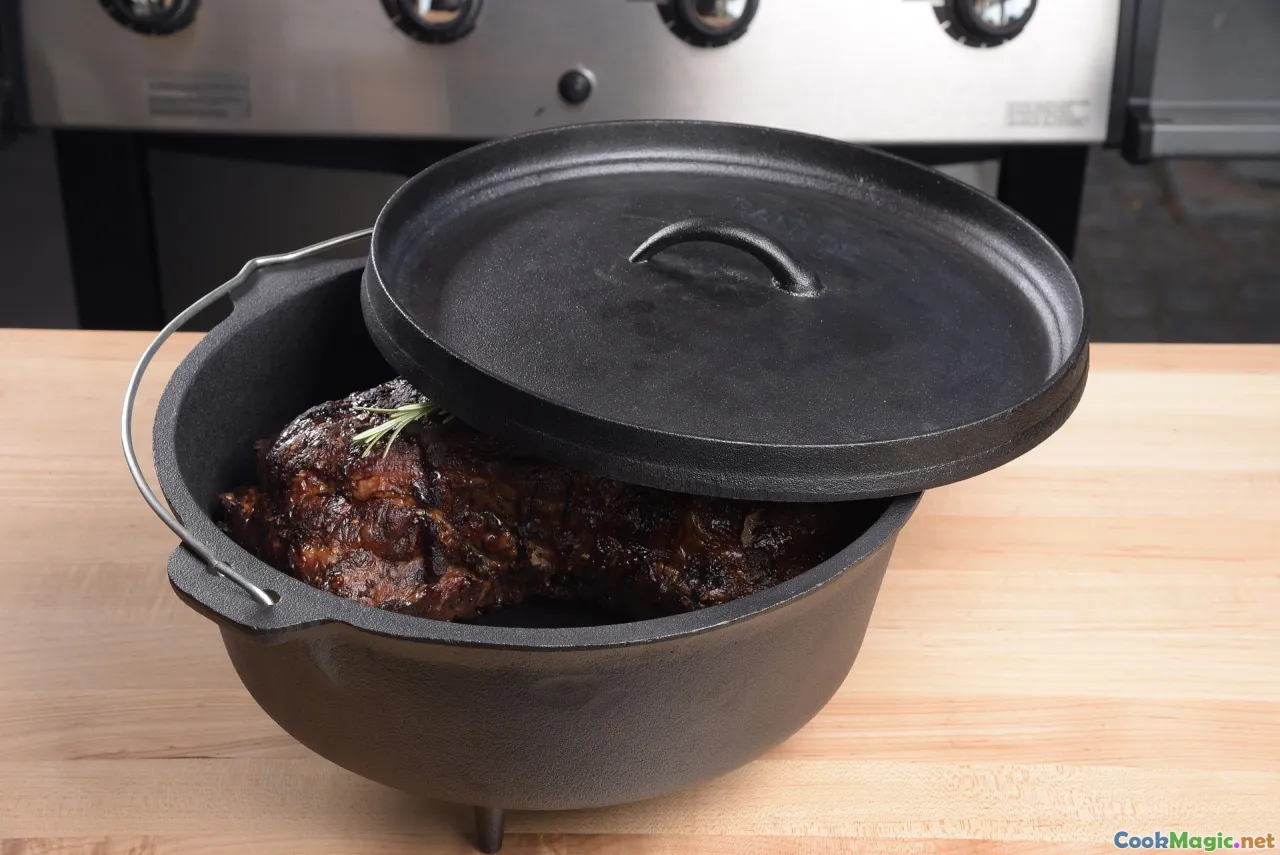
Many readers won’t have a coal pot on the patio or a banana tree in the yard. You can still honor the techniques in a city kitchen by protecting the core principles.
For coal pot heat: Use a heavy Dutch oven or clay pot on the lowest burner setting. Add a heat diffuser if you have one to mimic the soft patience of coal. If you crave smoke, nestle a small piece of pre-lit hardwood charcoal in a foil cup and set it in the pot briefly at the end, then cover—an old Indian dhungar method that brings a whisper of coal without outdoor rigging. Alternatively, cook on a grill with a two-zone fire and set your Dutch oven on the cool side for stews.
For fungee: Combine fine cornmeal with water and sliced okra in a heavy pot. Whisk at first to prevent lumps, then switch to a wooden spoon as it thickens. Keep a bowl of water handy; dip the spoon so the fungee releases. Cook until glossy and elastic; shape with a wet bowl or an oiled ice cream scoop.
For pepperpot: Soak salted meats overnight; rinse and simmer them first until they begin to relax. In the same pot, build your stew with onion, garlic, thyme, and local greens. If callaloo is unavailable, use tender amaranth or spinach with a handful of chopped kale for backbone. Add okra for viscosity rather than relying on flour. Simmer low and long. A slow cooker can help, but finish on the stove to control texture.
For ducana: Banana leaves are available frozen in many stores. Pass them over a gas flame or heated skillet until soft and aromatic. If you must, foil works. Grate sweet potato and coconut fresh if possible; frozen grated coconut is an acceptable substitute. Aim for a batter that falls in thick ribbons from a spoon. Tie packages lightly and simmer—not boil—until set.
For smoked fish: Use a grill with a small pile of hardwood charcoal to one side and a pan of soaked wood chips (fruitwood if you can find) to suggest tamarind’s sweetness. Oil grates generously. Grill fish over indirect heat with the lid down, finishing briefly over direct heat to crisp the skin.
For cassava bread: If bitter cassava is unavailable, use food-grade grated cassava from a trusted source and still press dry thoroughly, then toast on a dry pan to a brittle finish.
These translations are bridges, not replacements. They deliver the spirit—controlled heat, respect for greens, leaf-wrapped steaming, smoke as seasoning—into apartments and townhouses far from St. John’s Market.
Hotel Buffet vs Home Pot: A Respectful Comparison

Tourism is a fact of Antiguan and Barbudan life, and hotel buffets often feature “local night” spreads with pepperpot, fungee, grill fish, and coconut-inflected desserts. These offerings help introduce visitors to the island’s palette, but they can wash out the subtleties that define the indigenous techniques.
In a chafing dish, pepperpot thickeners may lean toward flour for consistency; salt calibrates to the crowd. In a home pot, okra’s silk is the thickener, and salted meats are coaxed toward kindness with many waters, their iron edges tamed but not erased. In homes, fungee rarely sits. It’s shaped, then eaten, before the elasticity stiffens. At a buffet, it risks cooling—pure texture loss. Grilled fish at resorts may see standardized marinades and uniform cook times; in backyards, the fish tells you when to flip, the embers decide how firm the flesh will be.
And yet: hotels can be allies. A chef at a resort near Ffryes Beach told me they switched from bouillon to long-simmered bone stock for their pepperpot once an elder came to teach and guests noticed. They began shaping fungee on demand near the buffet, working off a hot plate. The difference was immediate, and the chef said the staff learned as much as the diners. Preservation across generations doesn’t require rejecting modern service. It requires folding indigenous technique into the system and training staff to read sensory cues rather than timers alone.
Preservation in Practice: People, Places, and Programs

Preservation is not an abstract noun in Antigua and Barbuda. It’s a market morning and a pottery afternoon.
At St. John’s Public Market, Miss Celia sells thyme tied in neat bundles, seasoning peppers in traffic-light colors, and green bananas still smelling of stem. She tells a young customer not just what to buy, but how to hold the knife to strip plantains, how many times to wash salted beef. Each conversation is a transfer.
In Sea View Farm, potters shape coal pots as part of a living economy. Workshops for schoolchildren include a stop at the kiln. Kids are invited to paint their names on little pinch pots and watch them fire. They carry them home like lamp flames. Later, in the kitchen, their grandmother replaces the aluminum pot with clay for a Sunday stew, and the child recognizes the color, the feel. Technique preservation begins with material intimacy.
Community festivals help too. During Independence celebrations in October, the food fair becomes a university. You can watch a woman from Bolans fold ducana, see a man from Parham fillet a snapper with three flicks, buy a bottle of pepper sauce that smells like courage and mango. On Barbuda, Caribana offers a runway for cultural foods—seafood stews, johnny cakes fried to a gold you could wear, grilled lobster cooked by hands that know the reef’s mood. Each stall is a lesson, offered with a smile and a paper plate.
Institutions play their parts. The Antigua and Barbuda Hospitality Training Institute invites local cooks for guest sessions; the Gilbert Agricultural and Rural Development Center has supported agro-processing projects that keep cassava, sorrel, and other indigenous crops in the conversation. Schools host days where children cook with elders. Churches coordinate Saturday soup kitchens that keep pepperpot and seasoned rice in rotation. The diaspora contributes videos and recipe zines, and returnees come home with knives and new ways of documenting old ways.
If you’re a chef or food writer, consider a residency swap: spend a week apprenticing with an Antiguan home cook in exchange for a workshop on food safety, costing, or plating. Barter skills to keep the chain alive.
Field Guide to Flavors: Antiguan and Barbudan Pantry Notes

Preserving technique begins with honoring ingredients as teachers.
- Seasoning pepper: Not just a mild pepper. It smells like a sunny window and a fruit stall. Use it to build aroma in stews before you ever touch a scotch bonnet. Slice thin and bloom in oil with onion and thyme—your nose will tell you when it’s done, a moment when the raw green retreats and a bouquet leans forward.
- Scotch bonnet: Heat and citrus in a bonnet shape. Use whole for perfume, pierced with a knife tip to let a little fire out. Remove before serving. Chopped fine, it will rule the pot—reserve that for sauces and condiments. The technique is restraint.
- Black pineapple: Antigua’s pride. Sweet almost to disbelief, low acid, grown historically around Cades Bay. Use slivers to brighten rich stews, grill wedges to serve with fish, or dice into a salsa with seasoning pepper and mint. Respect it; it’s a dessert, a relish, and a palate cleanser all at once.
- Callaloo: Locally, amaranth leaves are common; young dasheen leaves appear too. Wash well; cook until the raw green smell, grassy and sharp, turns mellow and iron-sweet. Don’t rush; bitterness yields to patience.
- Okra: Fresh pods snap lithe. Slice and rinse if you fear the mucilage; but for pepperpot and fungee, you want that silk. Look for the moment the slime turns to sauce—the spoon will tell you.
- Breadfruit: Roasted whole over coals, it smells like chestnuts and toast. The skin blisters and blackens; inside, the flesh steams to a pale, slightly sticky softness. Perfect with saltfish or as a curry base. Teach the poke test: a skewer slides through with slight resistance; remove and rest.
- Sorrel (hibiscus): The calyces steep into a garnet drink flavored with ginger and clove. Techniques include a long steep and a patient sweeten—never blast sorrel with sugar or it hides. Reduce into a syrup to glaze pork.
- Local herbs: Broad-leaf thyme (Spanish thyme), slender-leaf thyme, basil, culantro (shadow beni). Bruise before adding. The perfume should greet you; if it shouts, you’ve used too much.
- Bush teas: Lemongrass (fever grass), bay leaf, soursop leaf. Techniques for infusion lean toward simmer-and-rest; let leaves steep off heat for full medicine and flavor.
Learning these flavors by nose and tongue keeps the techniques honest. A coal pot is only as good as what you put in it, and what you put in it is only as good as your understanding of its language.
Firelight Notes at Dusk

By the time the coal pot has surrendered its last embers, the sky over the islands has turned that particular Antiguan violet that painters wear out their brushes chasing. The kitchen smells like a map: smoke, lime, thyme, damp banana leaf, the last sweetness of pumpkin. The enamel bowl—the one with the chipped rim—is full of bones and stories.
Preserving indigenous cooking techniques across generations is not a fight against time; it’s a choreography with it. Each repetition—stirring fungee with a wet paddle, passing a banana leaf over flame, gauging the softness of conch by the sound of your mallet—etches muscle memory into the next pair of hands. We can write recipes and we should, but more importantly we can show up: at markets, in kitchens, by grills under almond trees, at potteries where clay becomes fireproof memory.
I left Bernice’s yard that first morning with smoke in my hair and a notebook full of aromas instead of numbers. Since then, every time I test a stew for doneness, I wait for the scent that sounds like her spoon tapping the coal pot’s rim: a cue, a keeping, a quiet yes. In Antigua and Barbuda, the old ways are not merely preserved; they’re practiced. And the most respectful way to keep them alive is to practice them too—wherever you cook, whoever you feed, whenever a pot of greens leans toward tenderness and a spoon finds the edge of a story.









